16 August 2022
Kinked metavolcanics of the Castine Formation, eastern Maine
Posted by Callan Bentley
Last week, I was in central-eastern coastal Maine, for a wedding, but I also made time for some geologizing. We stayed near Holbrook Island Sanctuary State Park, and spent several nice days there hiking and kayaking and exploring. The main rock unit I encountered is the Castine Formation, a Paleozoic-aged metavolcanic complex. The exact age appears uncertain: one source told me “Cambrian,” but elsewhere I see it listed as “Silurian-Devonian.” I used the fabulous app called Rock’d in the field as a guide for exploring.
I saw two principal varieties of rock: a coarse-grained lithology and a fine-grained one. Here’s a few views of the coarse stuff:
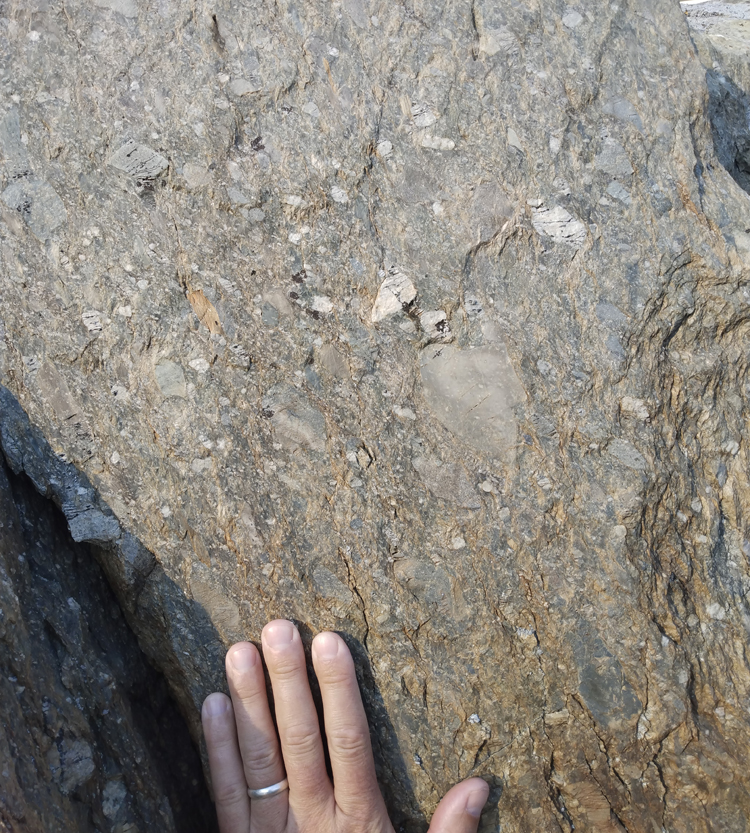
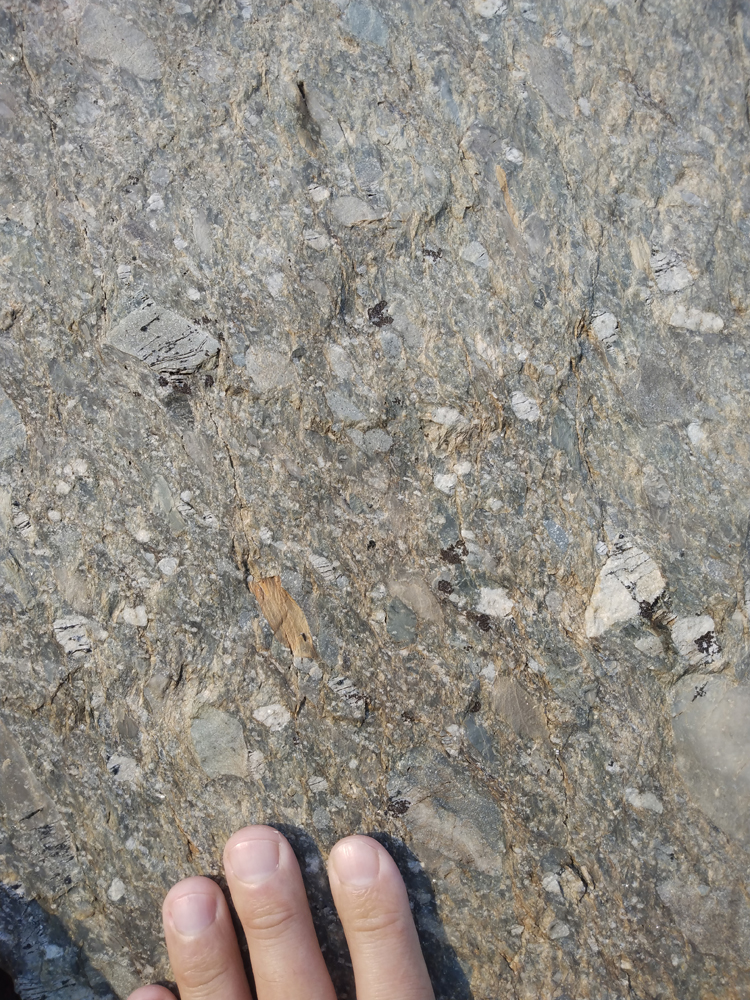

The coarse-grain size implies a certain violence to the deposition, and the grain shapes suggest proximity to the source. Note too the “matrix-supported” nature of the deposit: the largest clasts “float” in a finer-grained matrix, and don’t touch each other. This suggests very minimal winnowing of the fine material by consistent currents of water. Compositionally, these clasts are dominantly felsic, and were subjected to relatively low-grade metamorphism after they formed.
Here’s one outcrop I saw adjacent to Goose Pond, from a kayak:
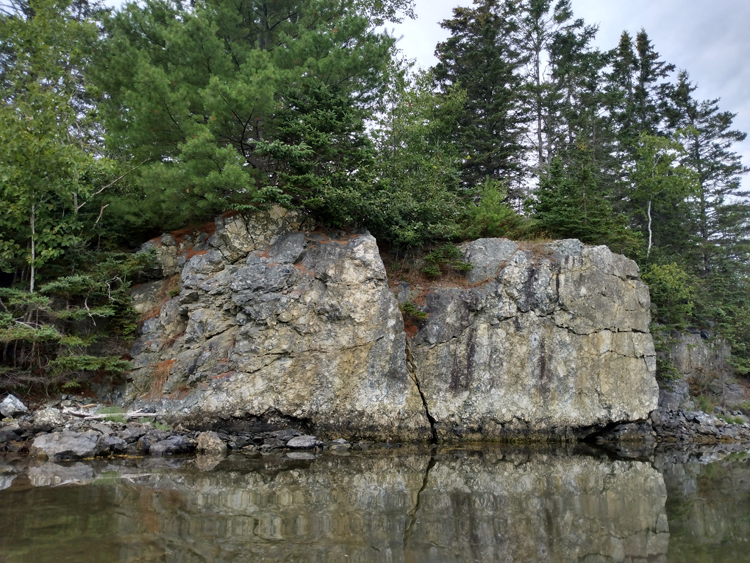
(field of view about 10 m)
The cleanest part is under the overhanging tree branches in the upper left. Let’s zoom in:
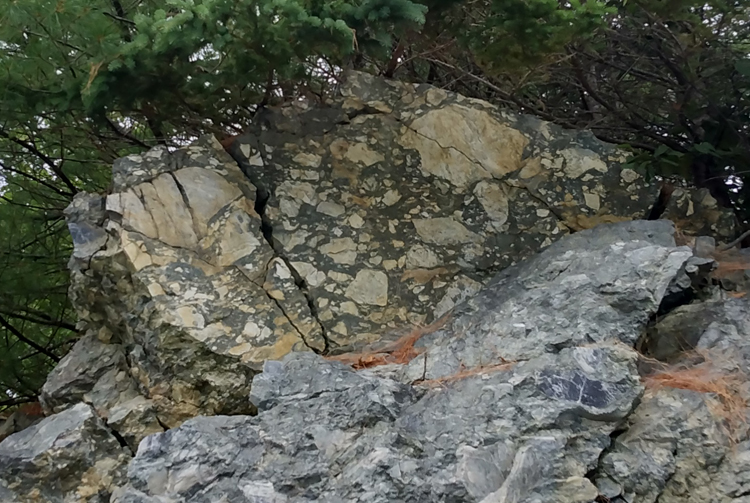
(field of view about 3 m)
Those are some of the larger clasts I saw, with the biggest 0.3-0.4 m across.
So, in terms of interpretation: lahar deposits, or powerful pyroclastic flows?
This is part of Avalonia (or Avalon), a composite “microcontinental” terrane the originated adjacent to Gondwana, and accreted to ancestral North America during the Acadian Orogeny.
This one shows some well-developed foliation (running from lower left to upper right), induced by one or another episode of Appalachian mountain-building, I guess probably the Acadian:
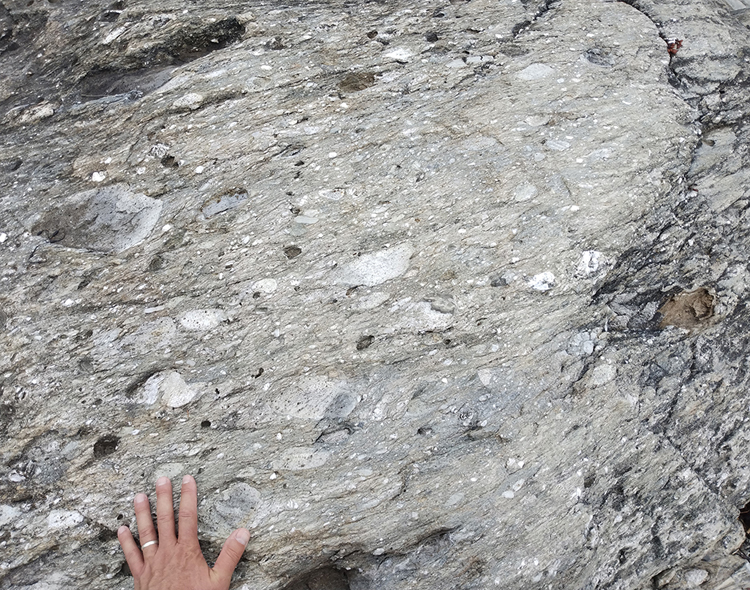
The other major lithology, the finer-grained metavolcanics, appeared to be more susceptible to deformation. Here’s an example showing a large kink fold disrupting foliation:
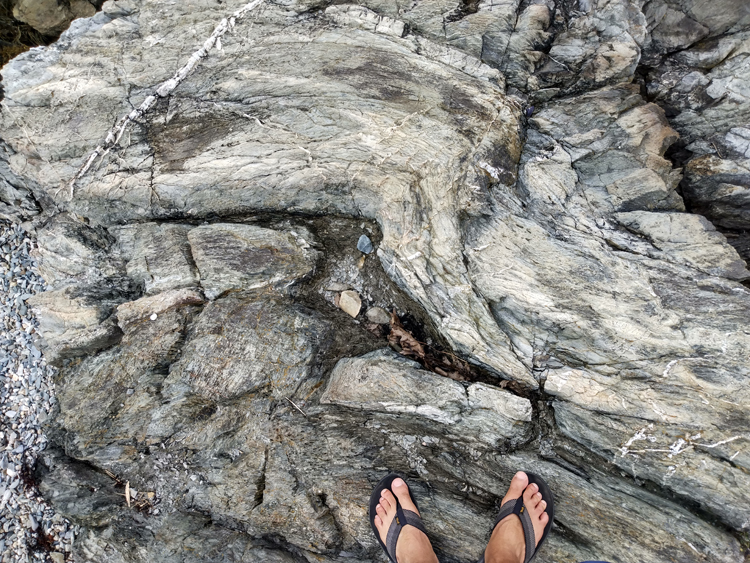
(Apologies for using my bare feet for scale!)
Well-developed kink bands in tight proximity, folding foliation:

More distributed kink bands:
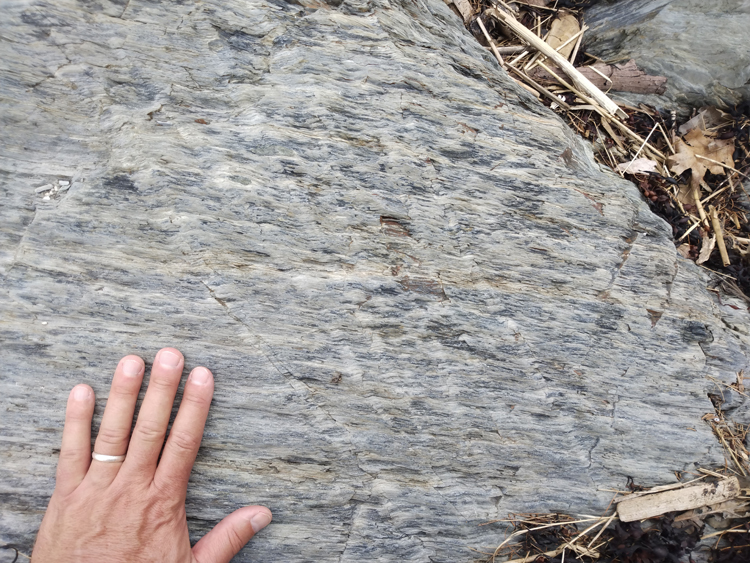
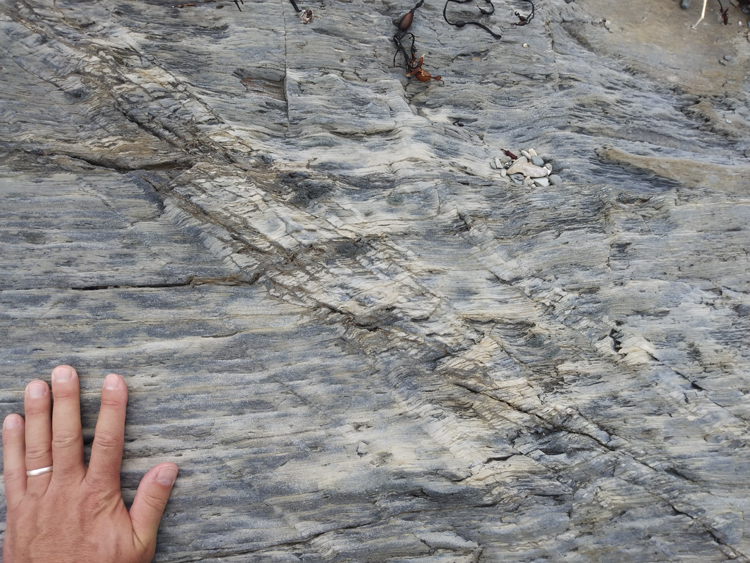
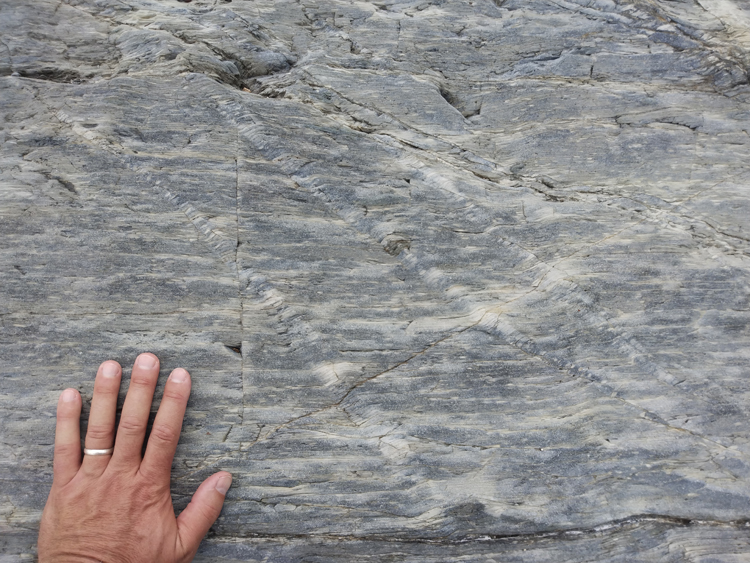
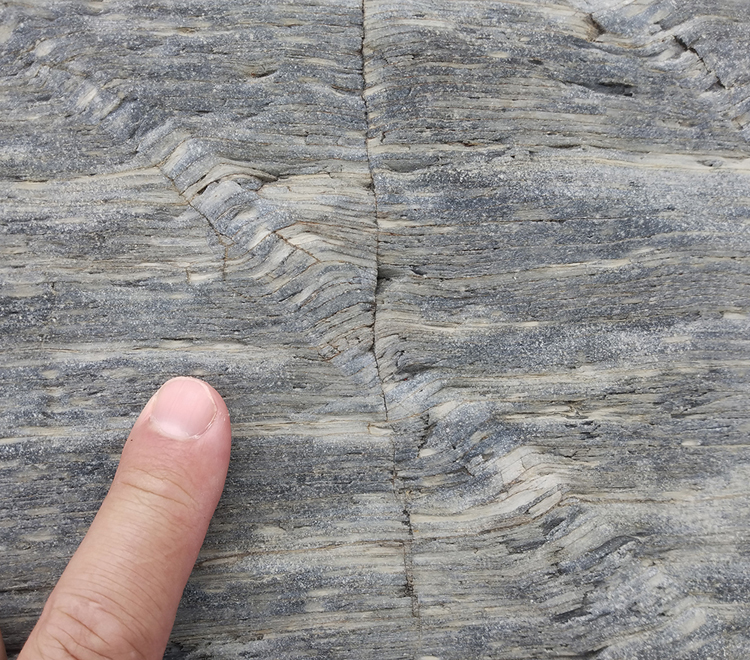
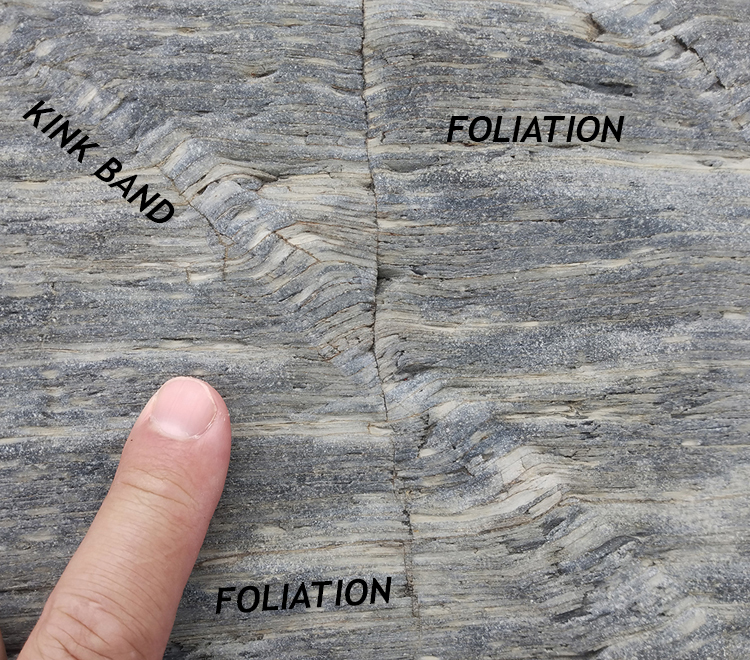
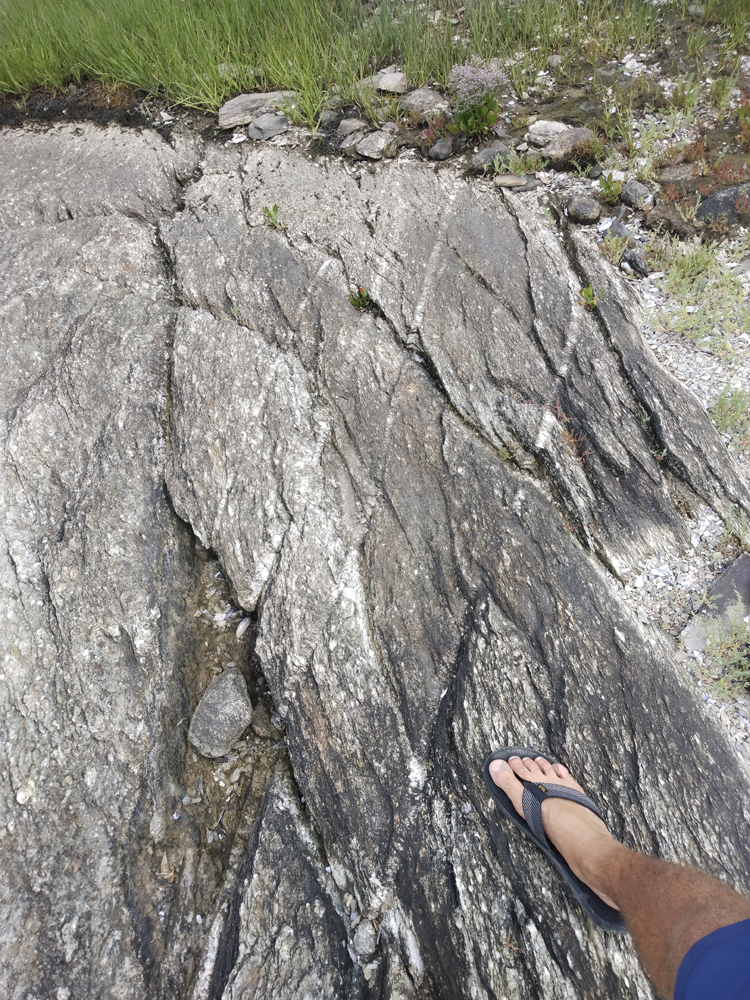
A conjugate pair of kink bands, one of only two such intersections I observed:
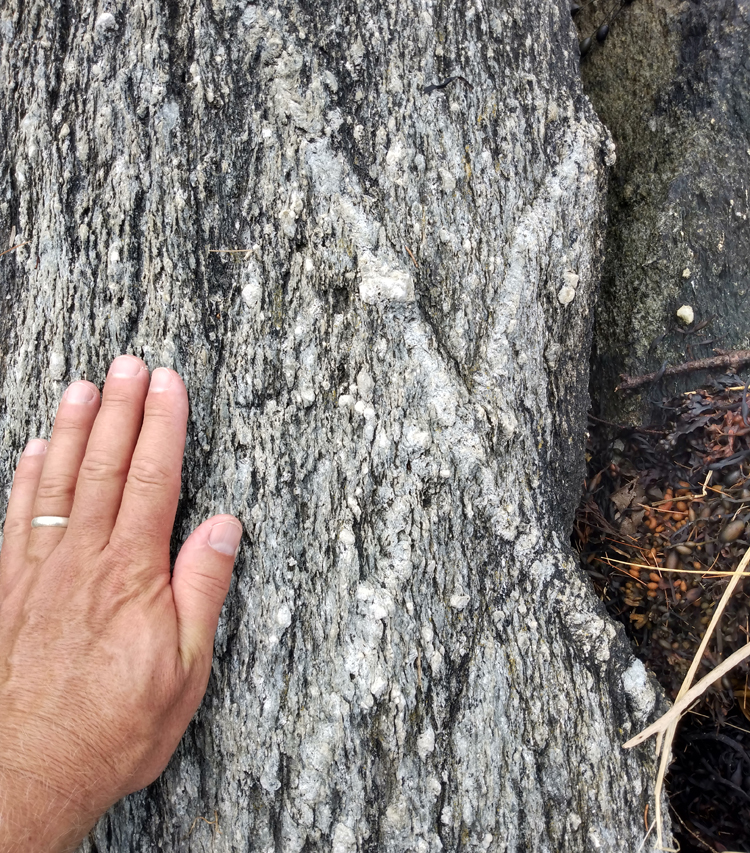
In two places, I saw basalt dikes cutting across the metavolcanic rocks:
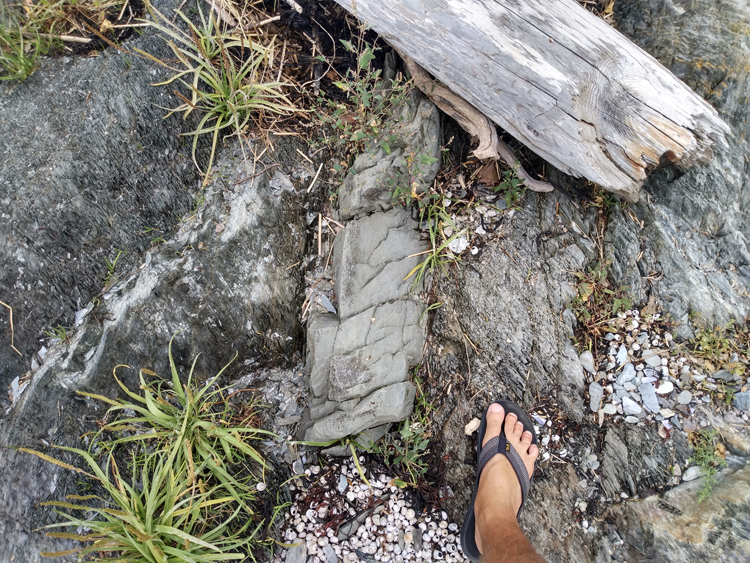
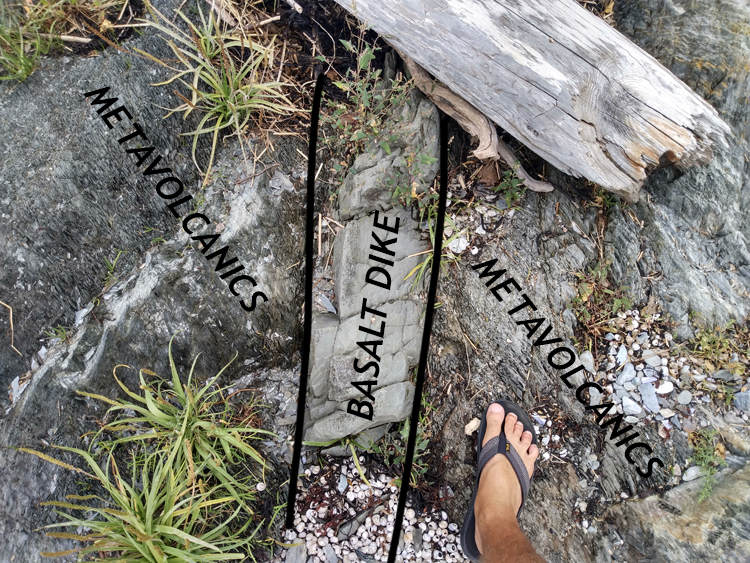
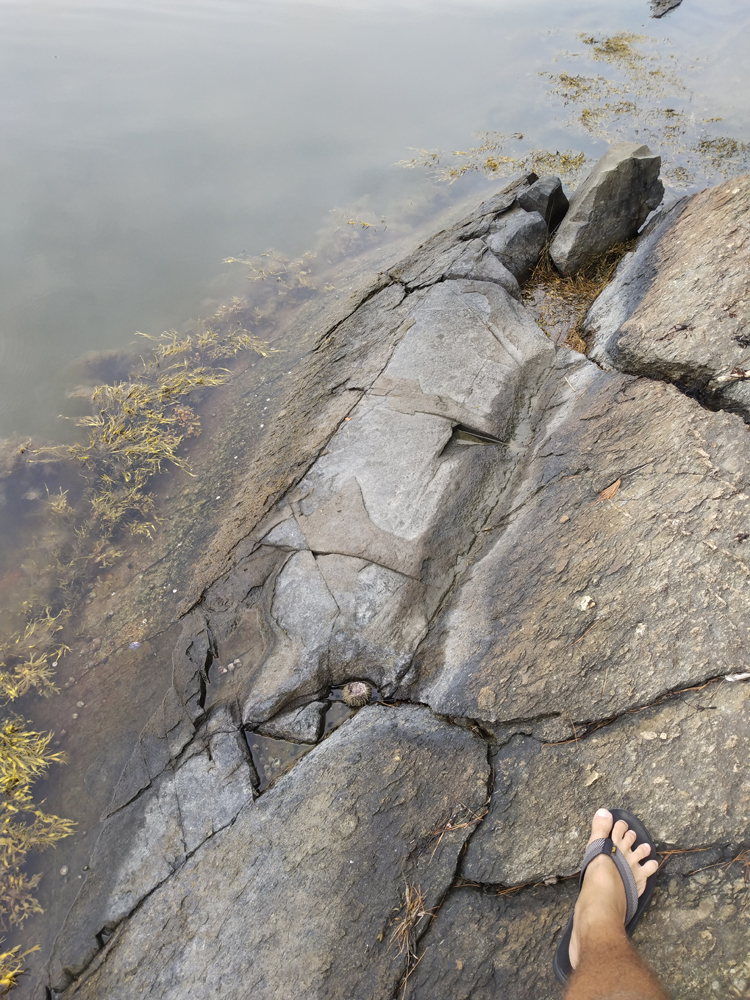
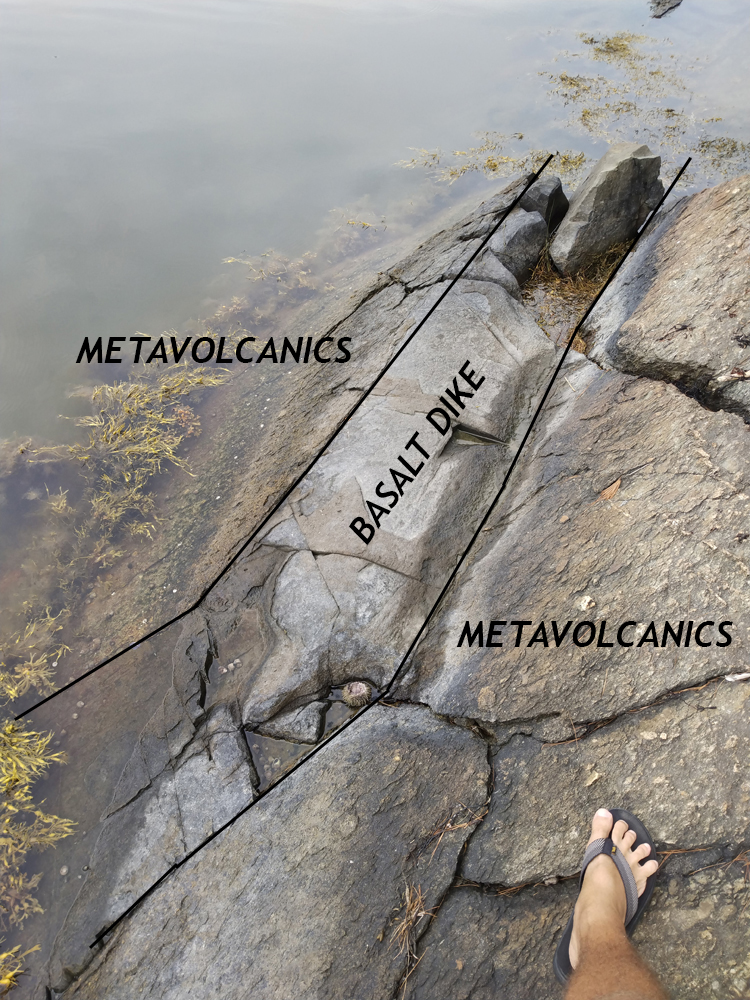
These are probably Triassic in age, related to the opening of the Atlantic and the nearby Fundy rift basin. Note that they are neither discernibly metamorphosed, nor deformed.
In my experience, few things are as satisfying as exploring new and interesting outcrops, on foot and by kayak. For this, coastal Maine was a real treat: plenty of interesting texture and structure, exposed in a complicated 3D swath between the forest and the sea.


 Callan Bentley is Associate Professor of Geology at Piedmont Virginia Community College in Charlottesville, Virginia. He is a Fellow of the Geological Society of America. For his work on this blog, the National Association of Geoscience Teachers recognized him with the James Shea Award. He has also won the Outstanding Faculty Award from the State Council on Higher Education in Virginia, and the Biggs Award for Excellence in Geoscience Teaching from the Geoscience Education Division of the Geological Society of America. In previous years, Callan served as a contributing editor at EARTH magazine, President of the Geological Society of Washington and President the Geo2YC division of NAGT.
Callan Bentley is Associate Professor of Geology at Piedmont Virginia Community College in Charlottesville, Virginia. He is a Fellow of the Geological Society of America. For his work on this blog, the National Association of Geoscience Teachers recognized him with the James Shea Award. He has also won the Outstanding Faculty Award from the State Council on Higher Education in Virginia, and the Biggs Award for Excellence in Geoscience Teaching from the Geoscience Education Division of the Geological Society of America. In previous years, Callan served as a contributing editor at EARTH magazine, President of the Geological Society of Washington and President the Geo2YC division of NAGT.